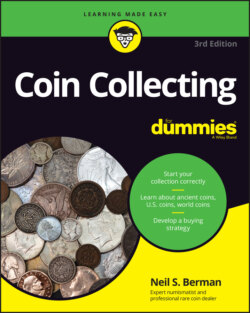Читать книгу Coin Collecting For Dummies - Neil S. Berman - Страница 44
Affecting a Coin’s Value
ОглавлениеOne of the greatest misconceptions about coins concerns their value. Given a choice, many noncollectors will pick a 2,000-year-old Roman denarius over a U.S. $20 gold piece any day, even though the denarius is worth $50 compared with $2,000 for the $20 gold piece (see Figure 3-1). Age seems to be an important factor to noncollectors; in their minds, the older a coin is, the more valuable it must be. Therefore, a 2,000-year-old coin must be worth a million bucks! Nothing could be further from the truth.
FIGURE 3-1: Roman denarius (left) or $20 gold piece (right): Which do you prefer?
Several factors affect the value of a coin: rarity, demand (or popularity), supply, condition, and external market factors. Any one of these factors can be significant by itself, or it may require some help from one of the other factors. A coin may be common in low grades, indicating a low rarity, but in high grades, the same coin may be very rare, making it what is known as a condition rarity. In such a case, the value of the coin makes a huge jump in price as it moves from a lower grade to a higher grade.
